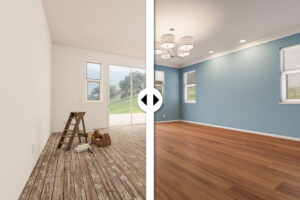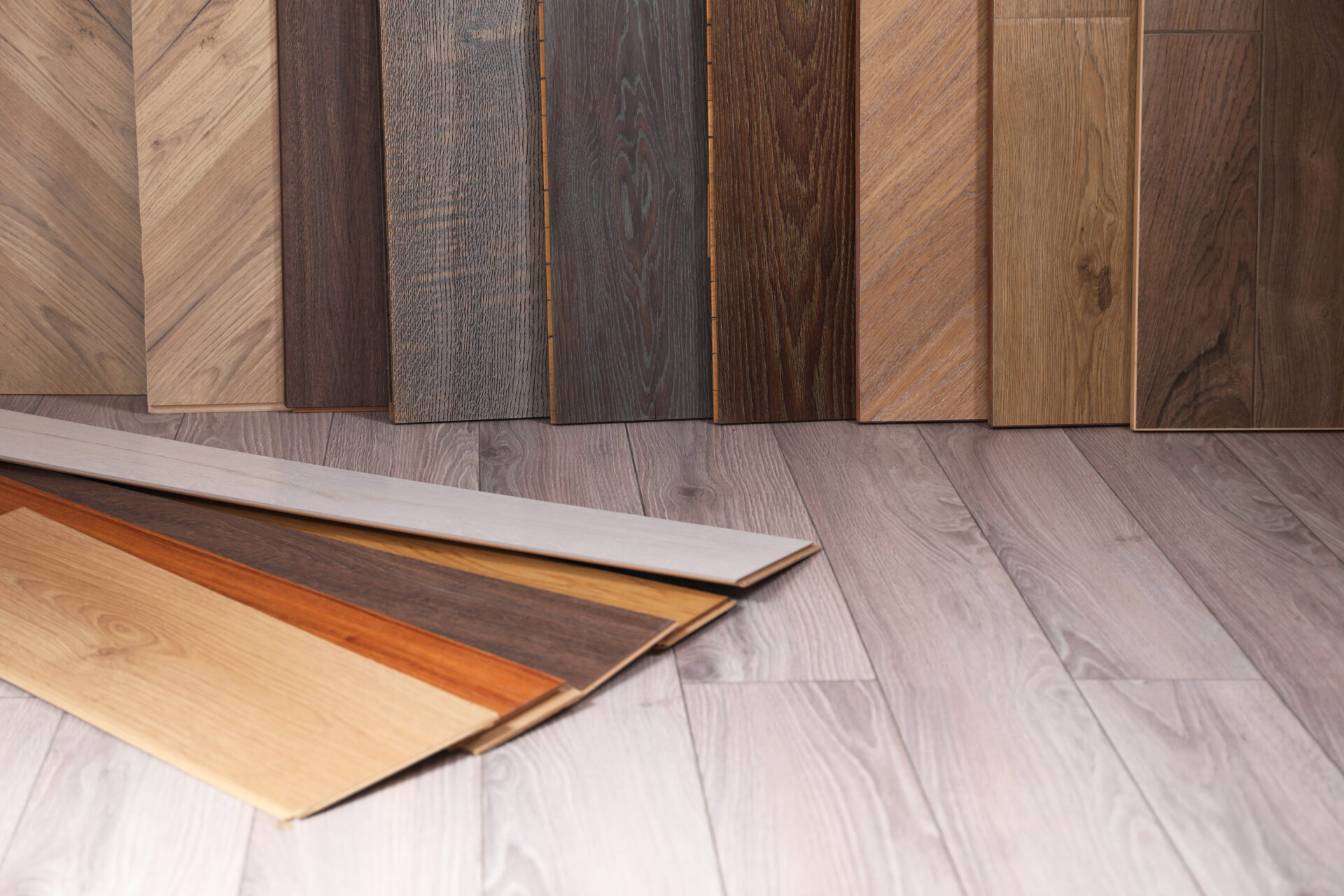Vinyl vs. Laminate Flooring: Exploring the best one.
It always seems overwhelming when it comes to deciding on your home flooring. Cutting it short, the two most popular options for modern home renovation are vinyl and laminate flooring. Both are considered best for elevating your home decor, durability, eye-catching designs, and affordability. However, some points differentiate these two types of flooring. Let’s understand their differences so that you can choose the best one to uplift your home aesthetics.

What is Vinyl Flooring?
Vinyl flooring is a synthetic product made from polyvinyl chloride plastic. Multiple variants are available in the market, such as luxury vinyl tiles, sheet vinyl, and planks. These are famous for their realistic appearance and waterproof ability, which mimics ceramic, wood, or stone.
Vinyl flooring contains various layers:
- A backing layer provides stability
- A core layer may be hard or flexible.
- A printed design layer
- A transparent wear layer to resist scuffs and scratches
What is Laminate Flooring?
On the other hand, laminate flooring is prepared from wood products. It consists of a fiberboard core covered with a layer of the photographic image and a rigid wear layer. It is preferred over vinyl flooring because of its close hardwood appearance, which gives a more authentic and rigid underfoot feel.
Laminate primarily includes:
- A backing layer of melamine
- A core of high-density fiberboard (HDF)
- A decorative high-resolution layer
- A clear resin wear layer for protection
Style And Appearance
Both laminate and vinyl flooring are available in multiple styles, colors, and patterns that appear like real ceramic and stone. Thanks to the printing industry, both materials appear realistic.
- Luxury variants of Vinyl flooring, LVT, and LVP are more flexible for multiple finishes and textures, including a realistic grain for embossing.
- Laminate flooring is more rigid than vinyl flooring; therefore, it tends to appear like wood. However, it is less likely to handle high moisture areas.
Durability and Maintenance
Vinyl flooring is preferable in water-exposed areas like kitchens, bathrooms, and basements. Its waterproof quality makes it the best option for homes with high humidity, pets, and kids.
- It is resistant to dents, scratches, and stains as well.
- It’s easy to clean with mopping and regular cleaning.
- High-quality vinyl flooring may last for 10 to 20 years or more with additional care.
Laminate flooring is durable but not water-repellent. Although some advanced floorings may offer waterproof features to some extent, continuous water contact may cause warping or swelling.
- It is resistant to scratches and handles effectively, specifically in high-traffic areas.
- Regular sweeping or damp mopping is better for cleaning.
- Its lifespan usually ranges from 10 to 20 years, according to its quality and maintenance.
Water Resistance
Here comes the major difference between vinyl flooring vs laminate flooring.
- Vinyl is completely waterproof. Continuous water exposure will not change its texture. Therefore, it has become an ideal selection for mudrooms, kitchens, bathrooms, and basements.
- Laminate is less resistant to water. You need to wipe out the spills quickly to avoid any damage. It is a better option for dry areas such as hallways, bedrooms, and living rooms.
Comfort and Sound
Laminate flooring feels harder underfoot because of its dense core and creates more noise when walking. However, it appears more natural due to its hard texture.
Vinyl flooring, on the other hand, feels softer. It produces less noise, specifically when backed with foam.
Installation
Both have DIY-friendly installation with a click lock system.
- Vinyl tiles are installed and glued down. Moreover, some types are made with peel-and-stick backing, which is perfect for quick projects and small spaces.
- Laminate flooring is commonly installed as a flooring. It sticks together without glue or nails.
Cost Comparison
Both are cost-effective replacements for tiles or hardwood. However, prices of laminate vs vinyl flooring differ depending on their quality, brand, and thickness.
- Vinyl flooring ranges from one dollar to six dollars per square foot. Additionally, luxury tiles may cost more.
- Laminate flooring costs from one dollar to five dollars per square foot. However, premium quality laminates may cost more.
Ideal Use Cases
- Vinyl is best if:
- You want waterproof flooring.
- You need installation in kitchens, bathrooms, or basements.
- You are looking for low-maintenance and durable floor options for kids and pets.
- Laminate is best if:
- You are scrolling for the most realistic wood appearance and feel.
- You need to install it in dry areas like the living room or bedroom.
- You love the feel of a more solid and harder floor underfoot.
Final Words
There’s no one-size-fits-all answer in the vinyl vs. laminate flooring debate. The right option lies in your preferences and requirements, such as your lifestyle, design preferences, and place of installation. Prefer vinyl if you are looking for a waterproof option, while laminate wins over vinyl in giving an authentic wood feel. Laminate offers great comfort, aesthetics, and texture at competitive prices.
However, before making any decision, check their pros and cons, product warranties, reviews, budget, and long-term needs. Comprehensive research is compulsory for giving your home a lovable, functional floor that will last for years.


